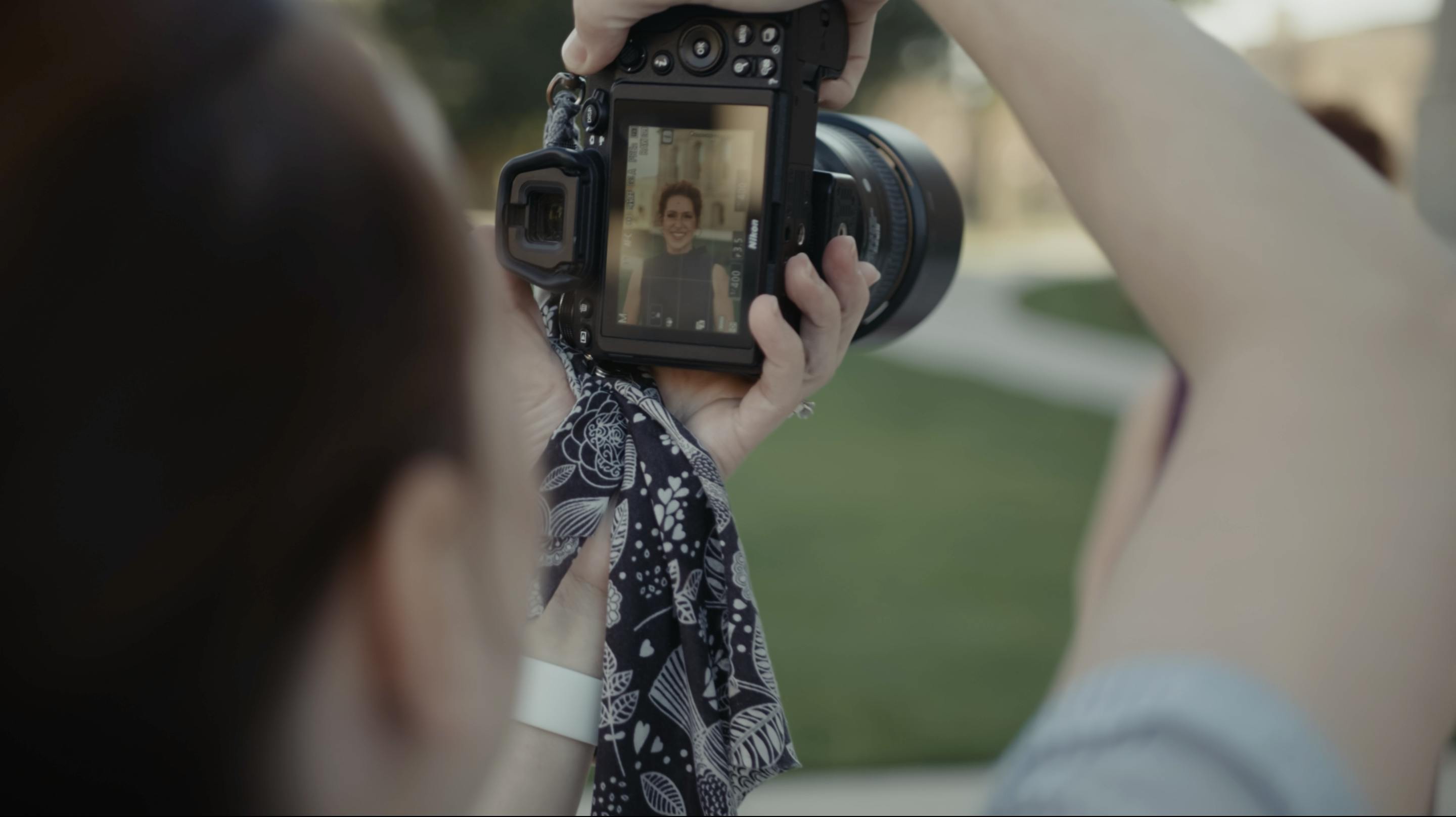Paid Advertising for Photographers
As a photographer, you have a skill few possess — the ability to capture treasured moments, emotions, and memories. But knowing how to advertise your photography can be the difference between thousands seeing your work or only your closest friends and family.
Paid advertising for photographers allows you to expand your audience, reach more people, and grow your business. But it can also be easy to spend a lot of money and feel like you're not getting a return on your investment.

There are more advertising platforms for photographers to choose from than ever before. Advertising your photography business can feel daunting or even intimidating. How do you stand out in a crowded market, attract new clients, and promote your work to the right people? Whether you're a seasoned professional or just starting, it's important to have a solid advertising strategy in place.
We have rounded up some of the most effective strategies to help you advertise your photography business and grow your client base.
Advertising for photographers 101 — understand your target audience
As you begin figuring out an advertising strategy for your photography business, ask yourself, "Who do you want to reach with your ads? And why?"
As a photographer, advertising can be a powerful tool to reach new clients and grow your business. However, to create effective advertising for photography that drives results, it's crucial to first understand your target audience.
Who do you want to reach with your ads? Are you looking to book more weddings, attract more corporate clients, or sell prints to art collectors? Once you have a clear idea of your target audience and goal, you can start crafting your ad messaging and targeting strategy.

Demographics
One key factor for successful advertising for photographers to consider is demographics. Age, gender, income, and location can all significantly determine how your ads are perceived and who they resonate with. For example, if you're targeting young couples looking for a wedding photographer, your messaging and imagery might look very different than if you're targeting high-end corporate clients.
To effectively understand your target audience, it can be helpful to create customer personas. This process involves creating fictional characters representing your ideal customers, including their demographics, behaviors, and pain points (pain points are things or situations that frustrate your potential clients). By creating customer personas, you can better understand the motivations and interests of your target audience and tailor your advertising campaigns to their needs.
Psychographics
Beyond demographics, you'll also want to consider psychographics – the values, attitudes, and lifestyles that define your ideal client. Are they adventurous and outdoorsy, or more traditional and family-oriented? Do they prioritize quality and luxury, or are they more budget-conscious? An ad that appeals to one group of people probably isn't going to appeal to those who have opposite values or attitudes. You can quickly end up with poorly performing ads by trying to appeal to too broad an audience. Understanding what your clients value at a core level can help you level up your advertising for photographers and allow you to tailor your content to better connect with your target audience on an emotional level.
Where do your clients spend their time while online?
Another important consideration with advertising for photographers is where your target audience spends their time online. Are they active on social media platforms like Instagram and Facebook, or do they prefer to browse photography blogs and industry websites? Are they trawling Pinterest for inspiration? Or do they like to read forums or seek advice on Reddit? Understanding their online habits can help you choose the correct channels or platform and placement for your advertising.

Top tip:
Besides these key factors, it's also important to continually track your ad performance and adjust your strategy as needed. Keep records of how your chosen advertising strategy is performing and seek to constantly improve it by testing different captions, imagery, and platforms. You can even run multiple versions of an ad at once with minor variations between each to see which content generates the most engagement, leads, or bookings — this is called A/B testing and is an excellent way to work out how to advertise your photography business over time.
Understanding your target audience is instrumental in creating ads that resonate with potential clients and drive business growth. By taking the time to research and get to know your audience, you can make more effective ads and build stronger relationships with your clients in the long run.

Advertising for photographers: Budgeting and goals
A successful advertising campaign can make a real difference to the success of your photography business. Before you launch your next campaign, you must create a budget that aligns with your goals and priorities. Setting realistic goals and allocating your resources strategically can help you achieve a higher ROI (Return on Investment) and create better results.
Setting an annual advertising budget
When creating a budget for advertising, it is important to consider the financial and time commitments required to execute your campaigns. This includes allocating funds for ad placements, creative development, and any additional resources needed, such as a marketing team or freelance designer. A good rule of thumb is to invest at least 10% of your annual revenue in advertising, although this figure may vary depending on your business goals.

Goal setting for campaign success
Are you aiming to attract new customers, create brand awareness, drive more website traffic, or increase bookings? Once you've established your core objectives, you can break down your budget into specific campaigns and tactics that align with these goals.
It's important to set realistic goals that are measurable and achievable. For example, to increase print sales, you may want to set a specific target of how many sales you want to generate from each campaign. Similarly, if you aim to attract new customers, you may want to set a goal for the number of leads you want to generate per campaign.

Once you've established your goals, you can allocate funds to each campaign. Be sure to prioritize the channels that will best reach your target audience. For photographers, this may include platforms like Instagram, Facebook, or Google Ads. Consider how much each platform will cost and how much you're willing to allocate to reach your goals.
Take time to consider your competition and market trends. Evaluate how much your competitors spend on advertising and where they invest their resources. This evaluation will help you identify gaps in the market and unique opportunities to stand out.
Once you have a clear understanding of your target audience and what motivates them to engage with your business, you can create advertising campaigns tailored to their needs and interests. This may involve creating ads highlighting your unique selling points, such as your expertise in a particular niche or your high-quality equipment and editing skills.
{{banner}}
Advertising for photographers: measuring effectiveness
As a photographer advertising your services, it's important to keep track of analytics to measure the effectiveness of your ads. Analytics provide quantitative data used to assess your advertising campaigns' effectiveness, identify improvement areas, and refine your strategies. Essentially, you're analyzing whether your ads are actually working to bring in more revenue for your business.
Google Analytics is one of the most powerful tools available to measure your advertising effectiveness. Google Analytics is a web analytics service that tracks and reports website traffic, allowing you to analyze user behavior on your website. With Google Analytics, you can see where your website visitors come from, which pages they visit, how long they stay on your website, and much more.
To track the effectiveness of your advertising campaigns, you'll need to set up goals within Google Analytics. Goals can be anything from completing a purchase on your website to submitting a contact form. Setting up goals lets you track which advertising campaigns bring in the most conversions.
Click-through rate
The click-through rate (CTR) is an important metric to measure. CTR measures the percentage of people who click on your ad after seeing it. The higher your CTR, the more effective your ad is at getting people to take action. If your CTR is low, it may be time to reevaluate and change your ad.
Conversion rate
Conversion rate is another essential metric to track. Conversion rate measures the percentage of people who take a specific action after clicking on your ad. This action could be filling out a contact form, making a purchase, or calling you for a consultation. Tracking your conversion rate lets you see how successful your ad is at getting people to take action and can help you identify areas where you can improve.
The right analytics can also provide valuable insights into your audience. By tracking metrics like age, gender, and location, you can see who is most interested in your work and where they're coming from. This information allows you to tailor your advertising efforts to better connect with your target audience.

Test and change, test and change — creating effective photography ads.
There's more to advertising for photographers than simply throwing up an ad and hoping for the best. That's like throwing a single dart at a board blindfolded and hoping to hit the bullseye. To truly stand out and attract potential clients, it's essential to test different ad copy and visuals to see what works best for your specific audience.
Testing different copy and visual components is like lifting the blindfold between throwing each dart, readjusting your stance, and positioning before taking another shot.
Creating multiple ad variations is one of the best ways to start testing. This allows you to experiment with different headlines, images, and CTA's (Call-to-Action). For example, try using various taglines such as "Experience the beauty of your life through photography," "Create memories that last a lifetime," "Capture the emotions of your special day," or "Book now for a discounted photo shoot." Each tagline can evoke different emotions and may resonate with different audiences. Depending on your target audience, one of these headlines might perform better than the other.
Create and test multiple versions of your ads:
When selecting and testing different images for your advertising, consider creating different versions of your ads with various photographs and imagery. One ad might feature a candid family portrait where everyone is laughing and having a good time, while another might showcase a more formal picture of a couple in a romantic setting. Testing different images can help you determine which visual style resonates most with your target audience.
Once you have multiple versions of your ads, measuring their effectiveness is essential. You can monitor the number of clicks, conversions, and overall engagement of each variation. Also, consider conducting surveys or focus groups to gather feedback on the effectiveness of each ad variation. It's important to note that testing is an ongoing process. As your business grows and your target audience changes, it's important to continue testing different ad variations to ensure you're always reaching your full potential.
Keep testing and adjusting — what works today might not work so well in a year.
As you continue to test different ad copy and visuals, it's important to remember that your audience's preferences may change over time. What worked well a year ago may not be as effective today. This is why it's important to constantly monitor the performance of your advertising campaigns and adjust your strategy accordingly.
Testing different ad copy and visuals is essential for photographers looking to improve their advertising strategy. By experimenting with different variations, measuring effectiveness, and continuously testing, you can ensure that your advertising efforts are continually fine-tuned to your target audience and helping to drive business growth.

Should you spend time and money on advertising your photography business?
When done well, advertising for photographers can increase the number of leads and bookings you get from the “right” clients for your business. Through testing and iterating, you’ll refine your messaging and advertising strategy, arriving at the copy, imagery, and ad placements that work best for your clients. Then you can easily scale up and book more similar clients, expand your audience, and grow your business.


